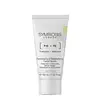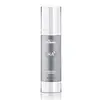What's inside
What's inside
 Key Ingredients
Key Ingredients

 Benefits
Benefits

 Concerns
Concerns

 Ingredients Side-by-side
Ingredients Side-by-side

Water
Skin ConditioningCyclopentasiloxane
EmollientIsododecane
EmollientPolysilicone-11
Steareth-21
CleansingPropylheptyl Caprylate
EmollientParfum
MaskingSodium Hyaluronate
HumectantAdipic Acid/Neopentyl Glycol Copolymer
Skin ConditioningCarbomer
Emulsion StabilisingEthylhexylglycerin
Skin ConditioningTriethanolamine
BufferingTrehalose
HumectantUrea
BufferingGlycerin
HumectantGlycine Soja Oil
EmollientAlgin
MaskingPullulan
Retinol
Skin ConditioningLaureth-12
EmulsifyingDimethicone
EmollientSerine
MaskingPentylene Glycol
Skin ConditioningVp/Va Copolymer
Propylene Glycol
HumectantCaprylyl Glycol
EmollientHydroxypropyl Methylcellulose
Emulsion StabilisingAmodimethicone
Glyceryl Polyacrylate
Inulin
Skin ConditioningPotassium Phosphate
BufferingAlpha-Glucan Oligosaccharide
CleansingTocopherol
AntioxidantBHT
AntioxidantDisodium Phosphate
BufferingCI 16035
Cosmetic ColorantPhenoxyethanol
PreservativeWater, Cyclopentasiloxane, Isododecane, Polysilicone-11, Steareth-21, Propylheptyl Caprylate, Parfum, Sodium Hyaluronate, Adipic Acid/Neopentyl Glycol Copolymer, Carbomer, Ethylhexylglycerin, Triethanolamine, Trehalose, Urea, Glycerin, Glycine Soja Oil, Algin, Pullulan, Retinol, Laureth-12, Dimethicone, Serine, Pentylene Glycol, Vp/Va Copolymer, Propylene Glycol, Caprylyl Glycol, Hydroxypropyl Methylcellulose, Amodimethicone, Glyceryl Polyacrylate, Inulin, Potassium Phosphate, Alpha-Glucan Oligosaccharide, Tocopherol, BHT, Disodium Phosphate, CI 16035, Phenoxyethanol
Water
Skin ConditioningDimethicone
EmollientHdi/Trimethylol Hexyllactone Crosspolymer
Glycerin
HumectantButylene Glycol
HumectantBis-PEG-8 Dimethicone
Skin ConditioningPolysilicone-11
Sodium Acrylate/Sodium Acryloyldimethyl Taurate Copolymer
Emulsion StabilisingSodium Hyaluronate Crosspolymer
HumectantHydrolyzed Hyaluronic Acid
HumectantSodium Hyaluronate
HumectantVitis Vinifera Flower Cell Extract
MaskingVibrio Alginolyticus Ferment Filtrate
AbrasiveAlteromonas Ferment Extract
Skin ConditioningPorphyridium Cruentum Extract
Skin ConditioningWhey Protein
Skin ConditioningPlankton Extract
Skin ConditioningTrehalose
HumectantUrea
BufferingSerine
MaskingAlgin
MaskingCaprylyl Glycol
EmollientPullulan
Disodium Phosphate
BufferingPotassium Phosphate
BufferingPentylene Glycol
Skin ConditioningPolymethylsilsesquioxane
Glyceryl Polyacrylate
Sodium Citrate
BufferingSea Water
HumectantSucrose Palmitate
EmollientTocopheryl Acetate
AntioxidantHydroxyacetophenone
AntioxidantPolysorbate 60
EmulsifyingPropanediol
SolventPotassium Sorbate
PreservativeCitric Acid
BufferingIsohexadecane
EmollientPolysorbate 80
EmulsifyingSilica
AbrasiveDecyl Glucoside
CleansingTromethamine
BufferingEthylhexylglycerin
Skin ConditioningPhenoxyethanol
PreservativeDisodium EDTA
Water, Dimethicone, Hdi/Trimethylol Hexyllactone Crosspolymer, Glycerin, Butylene Glycol, Bis-PEG-8 Dimethicone, Polysilicone-11, Sodium Acrylate/Sodium Acryloyldimethyl Taurate Copolymer, Sodium Hyaluronate Crosspolymer, Hydrolyzed Hyaluronic Acid, Sodium Hyaluronate, Vitis Vinifera Flower Cell Extract, Vibrio Alginolyticus Ferment Filtrate, Alteromonas Ferment Extract, Porphyridium Cruentum Extract, Whey Protein, Plankton Extract, Trehalose, Urea, Serine, Algin, Caprylyl Glycol, Pullulan, Disodium Phosphate, Potassium Phosphate, Pentylene Glycol, Polymethylsilsesquioxane, Glyceryl Polyacrylate, Sodium Citrate, Sea Water, Sucrose Palmitate, Tocopheryl Acetate, Hydroxyacetophenone, Polysorbate 60, Propanediol, Potassium Sorbate, Citric Acid, Isohexadecane, Polysorbate 80, Silica, Decyl Glucoside, Tromethamine, Ethylhexylglycerin, Phenoxyethanol, Disodium EDTA
Ingredients Explained
These ingredients are found in both products.
Ingredients higher up in an ingredient list are typically present in a larger amount.
Algin is brown algae. Algae is an informal term for a group of aquatic organisms that can photosynthesize. It is estimated there are at least 30,000 types of Algae.
Algae contains antioxidants. Antioxidants help fight free-radicals. Free-radicals are molecules that may damage your skin cells, such as pollution.
Caprylyl Glycol is a humectant and emollient, meaning it attracts and preserves moisture.
It is a common ingredient in many products, especially those designed to hydrate skin. The primary benefits are retaining moisture, skin softening, and promoting a healthy skin barrier.
Though Caprylyl Glycol is an alcohol derived from fatty acids, it is not the kind that can dry out skin.
This ingredient is also used as a preservative to extend the life of products. It has slight antimicrobial properties.
Learn more about Caprylyl GlycolDimethicone is a type of synthetic silicone created from natural materials such as quartz.
What it does:
Dimethicone comes in different viscosities:
Depending on the viscosity, dimethicone has different properties.
Ingredients lists don't always show which type is used, so we recommend reaching out to the brand if you have questions about the viscosity.
This ingredient is unlikely to cause irritation because it does not get absorbed into skin. However, people with silicone allergies should be careful about using this ingredient.
Note: Dimethicone may contribute to pilling. This is because it is not oil or water soluble, so pilling may occur when layered with products. When mixed with heavy oils in a formula, the outcome is also quite greasy.
Learn more about DimethiconeDisodium Phosphate is a water-soluble powder used as a pH adjuster.
Ethylhexylglycerin (we can't pronounce this either) is commonly used as a preservative and skin softener. It is derived from glyceryl.
You might see Ethylhexylglycerin often paired with other preservatives such as phenoxyethanol. Ethylhexylglycerin has been found to increase the effectiveness of these other preservatives.
Glycerin is already naturally found in your skin. It helps moisturize and protect your skin.
A study from 2016 found glycerin to be more effective as a humectant than AHAs and hyaluronic acid.
As a humectant, it helps the skin stay hydrated by pulling moisture to your skin. The low molecular weight of glycerin allows it to pull moisture into the deeper layers of your skin.
Hydrated skin improves your skin barrier; Your skin barrier helps protect against irritants and bacteria.
Glycerin has also been found to have antimicrobial and antiviral properties. Due to these properties, glycerin is often used in wound and burn treatments.
In cosmetics, glycerin is usually derived from plants such as soybean or palm. However, it can also be sourced from animals, such as tallow or animal fat.
This ingredient is organic, colorless, odorless, and non-toxic.
Glycerin is the name for this ingredient in American English. British English uses Glycerol/Glycerine.
Learn more about GlycerinWe don't have a description for Glyceryl Polyacrylate yet.
Pentylene glycol is typically used within a product to thicken it. It also adds a smooth, soft, and moisturizing feel to the product. It is naturally found in plants such as sugar beets.
The hydrophilic trait of Pentylene Glycol makes it a humectant. As a humectant, Pentylene Glycol helps draw moisture from the air to your skin. This can help keep your skin hydrated.
This property also makes Pentylene Glycol a great texture enhancer. It can also help thicken or stabilize a product.
Pentylene Glycol also acts as a mild preservative and helps to keep a product microbe-free.
Some people may experience mild eye and skin irritation from Pentylene Glycol. We always recommend speaking with a professional about using this ingredient in your routine.
Pentylene Glycol has a low molecular weight and is part of the 1,2-glycol family.
Learn more about Pentylene GlycolPhenoxyethanol is a preservative that has germicide, antimicrobial, and aromatic properties. Studies show that phenoxyethanol can prevent microbial growth. By itself, it has a scent that is similar to that of a rose.
It's often used in formulations along with Caprylyl Glycol to preserve the shelf life of products.
Polysilicone-11 is a film-forming silicone that creates a non-tacky and matte finish on the skin. It's commonly used to improve texture, absorb excess oil, and help active ingredients spread evenly.
Due to its "rubber-like" structure, it stays on the skin's surface instead of being absorbed. On the skin, it creates a flexible layer that enhances wearability and stability.
Potassium Phosphate is the term for the salts of potassium and phosphate ions. Our bodies naturally create and use potassium phosphate.
In cosmetics, potassium phosphate is used to adjust the pH level of products. Our skin has a natural pH level. Maintaining this pH level is important for our skin barrier. If the skin barrier is disrupted, our skin can experience dehydration and irritation.
This ingredient is used in medicine to help treat low blood levels of phosphorus.
Learn more about Potassium PhosphatePullulan is a low viscosity polysaccharide (a long chain carbohydrate) with binding and film forming properties when dissolved in water. It is used to create a "silicone-like" or silky feel in cosmetics without adding viscosity.
According to a manufacturer, this ingredient's ability to easily dissolves makes it a great carrier for active ingredients.
Due to it being edible and tasteless, you'll likely find this ingredient in breath freshener strips. This ingredient is produced from the starch of the fungus, Aureobasidium pullulans.
Pullulan is stable over a broad-range of pH.
Learn more about PullulanSerine is an amino acid naturally found in our body. Our bodies use amino acids to create protein.
Amino-acids help give keep our skin hydrated. They play an important role in the skin barrier, which keeps the skin plump and firm.
Serine is a non-essential amino acid, meaning we don't need to obtain it from eating foods.
Learn more about SerineSodium Hyaluronate is hyaluronic acid's salt form. It is commonly derived from the sodium salt of hyaluronic acid.
Like hyaluronic acid, it is great at holding water and acts as a humectant. This makes it a great skin hydrating ingredient.
Sodium Hyaluronate is naturally occurring in our bodies and is mostly found in eye fluid and joints.
These are some other common types of Hyaluronic Acid:
Learn more about Sodium HyaluronateTrehalose is a disaccharide made of two glucose molecules (glucose is sugar!). Trehalose is used to help moisturize skin. It also has antioxidant properties.
As a humectant, trehalose helps draw moisture from the air to your skin. This helps keep your skin hydrated.
Due to its antioxidant properties, trehalose may help with signs of aging. Antioxidants help fight free-radical molecules, unstable molecules that may damage your skin.
In medicine, trehalose and hyaluronic acid are used to help treat dry eyes.
Some animals, plants, and bacteria create trehalose as a source of energy to survive freeze or lack of water.
Learn more about TrehaloseUrea is also called carbamide and is the diamide of carbonic acid. In cosmetics, urea is used to hydrate the skin. It also provides exfoliation in higher concentrations.
As a humectant, urea helps draw moisture from the air and from deep within the skin. This helps hydrate your skin. Studies show urea is an effective moisturizer for dry skin conditions. 40% urea is typical in medications for treating eczema and other skin conditions.
Urea has the strongest exfoliation effect in concentrations higher than 10%. It is a keratolytic agent, meaning it breaks down the keratin protein in the top layer of skin. This helps remove dead skin cells and flaking skin.
In medicine, urea has been shown to help increase the potency of other ingredients, such as fungal treatments.
Humans and animals use urea to metabolize nitrogen-containing compounds. Urea is highly soluble in water. Once dissolved, it is neither acidic nor alkaline.
Learn more about UreaWater. It's the most common cosmetic ingredient of all. You'll usually see it at the top of ingredient lists, meaning that it makes up the largest part of the product.
So why is it so popular? Water most often acts as a solvent - this means that it helps dissolve other ingredients into the formulation.
You'll also recognize water as that liquid we all need to stay alive. If you see this, drink a glass of water. Stay hydrated!
Learn more about Water